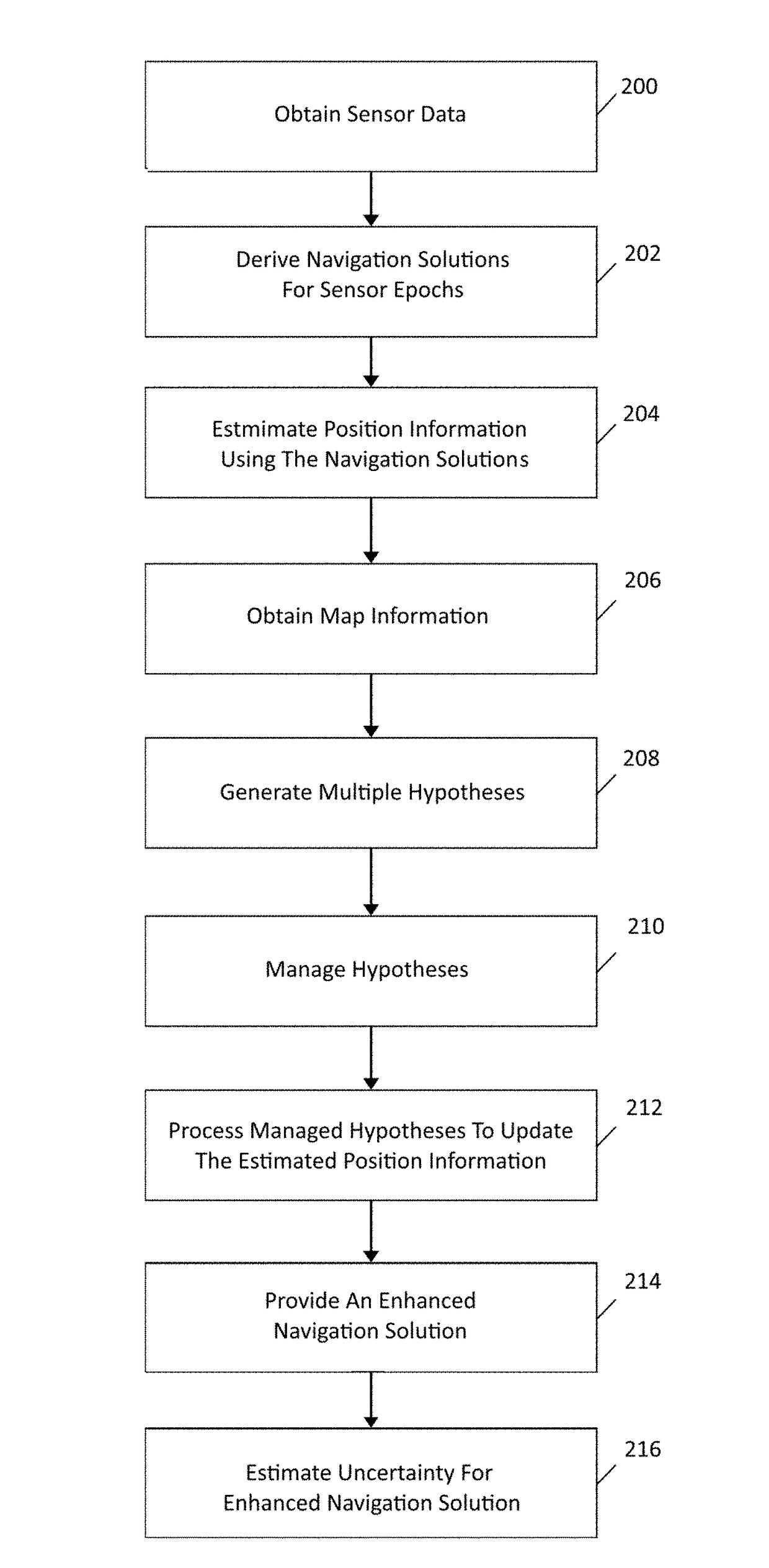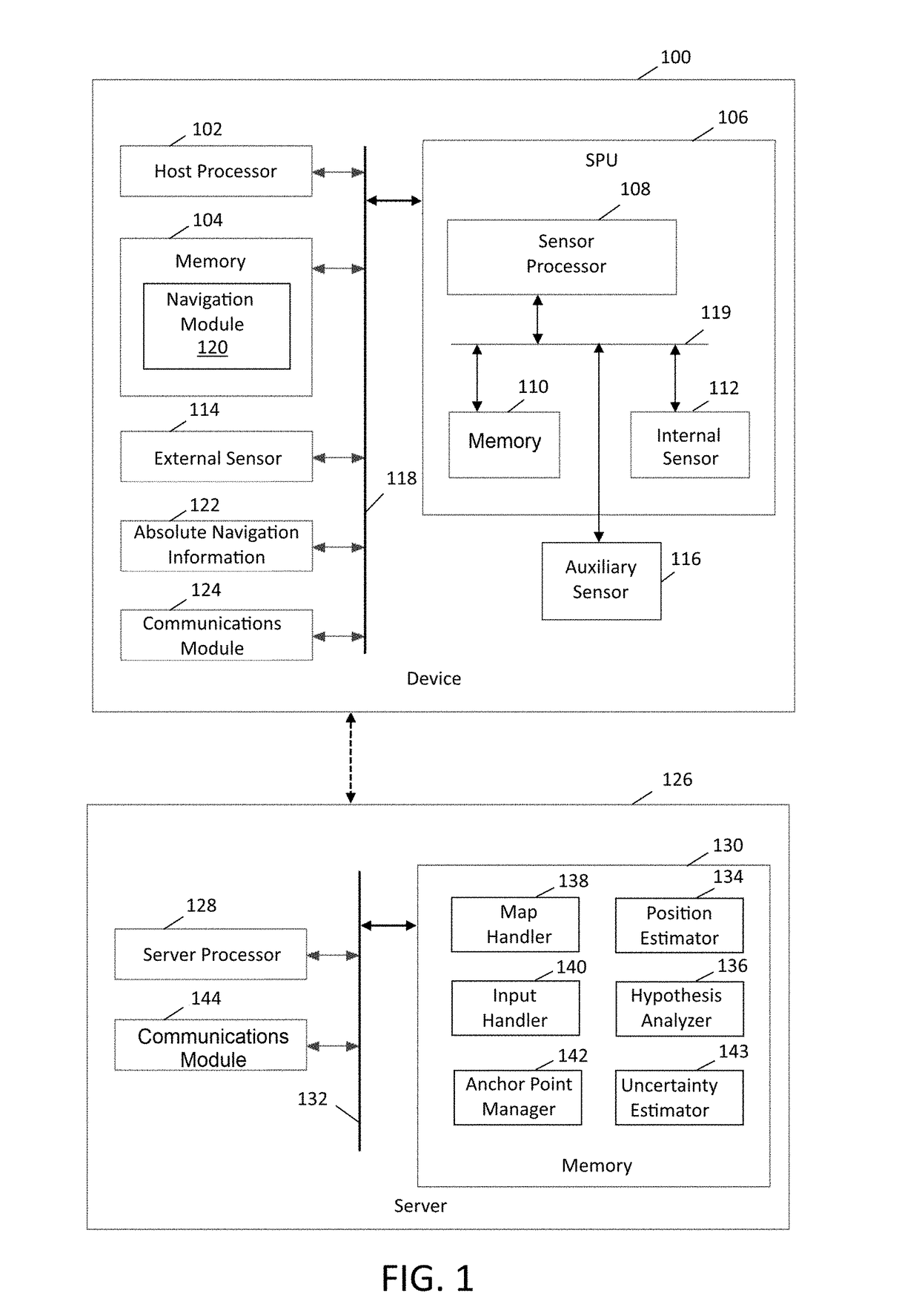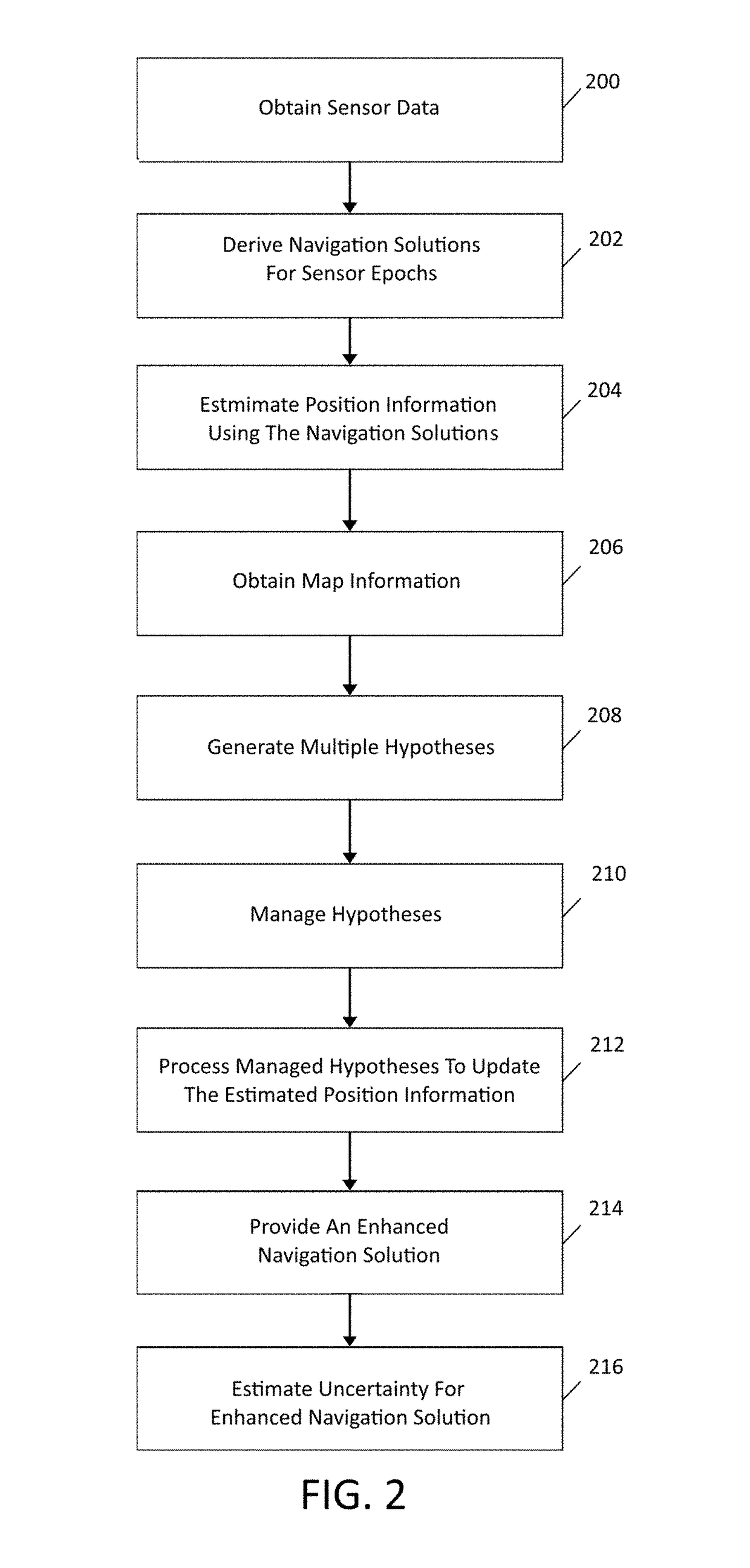Method and system for estimating uncertainty for offline map information aided enhanced portable navigation
a technology of offline map information and uncertainty estimation, which is applied in traffic control systems, navigation instruments, instruments, etc., can solve the problems of pdr still lacking robustness, pdr that only relies on motion sensors, and conventional strapdown inertial navigation systems that use low-cost inertial sensors
- Summary
- Abstract
- Description
- Claims
- Application Information
AI Technical Summary
Benefits of technology
Problems solved by technology
Method used
Image
Examples
examples
[0131]As described above, the techniques of the disclosure involve providing an offline enhanced navigation solution using map information. In some embodiments, operations and / or algorithms related to map matching may be similar to those described in co-pending, commonly-assigned U.S. patent application Ser. No. 14 / 845,903, filed Sep. 4, 2015, which is entitled “METHOD AND APPARATUS FOR USING MAP INFORMATION AIDED ENHANCED PORTABLE NAVIGATION,” which is related to causal map-matching as opposed to offline map-matching and is incorporated by reference in its entirety.
[0132]To illustrate an exemplary embodiment, one suitable relationship between the functional blocks implemented by server 126 is shown in FIG. 3. Navigation solutions derived by navigation module 120 corresponding to a plurality of sensor epochs over a first time period are fed to input hander 140 at subsequent time. Input handler 140 may provide operations on the navigation solutions to facilitate their use by position...
PUM
 Login to View More
Login to View More Abstract
Description
Claims
Application Information
 Login to View More
Login to View More - R&D
- Intellectual Property
- Life Sciences
- Materials
- Tech Scout
- Unparalleled Data Quality
- Higher Quality Content
- 60% Fewer Hallucinations
Browse by: Latest US Patents, China's latest patents, Technical Efficacy Thesaurus, Application Domain, Technology Topic, Popular Technical Reports.
© 2025 PatSnap. All rights reserved.Legal|Privacy policy|Modern Slavery Act Transparency Statement|Sitemap|About US| Contact US: help@patsnap.com



